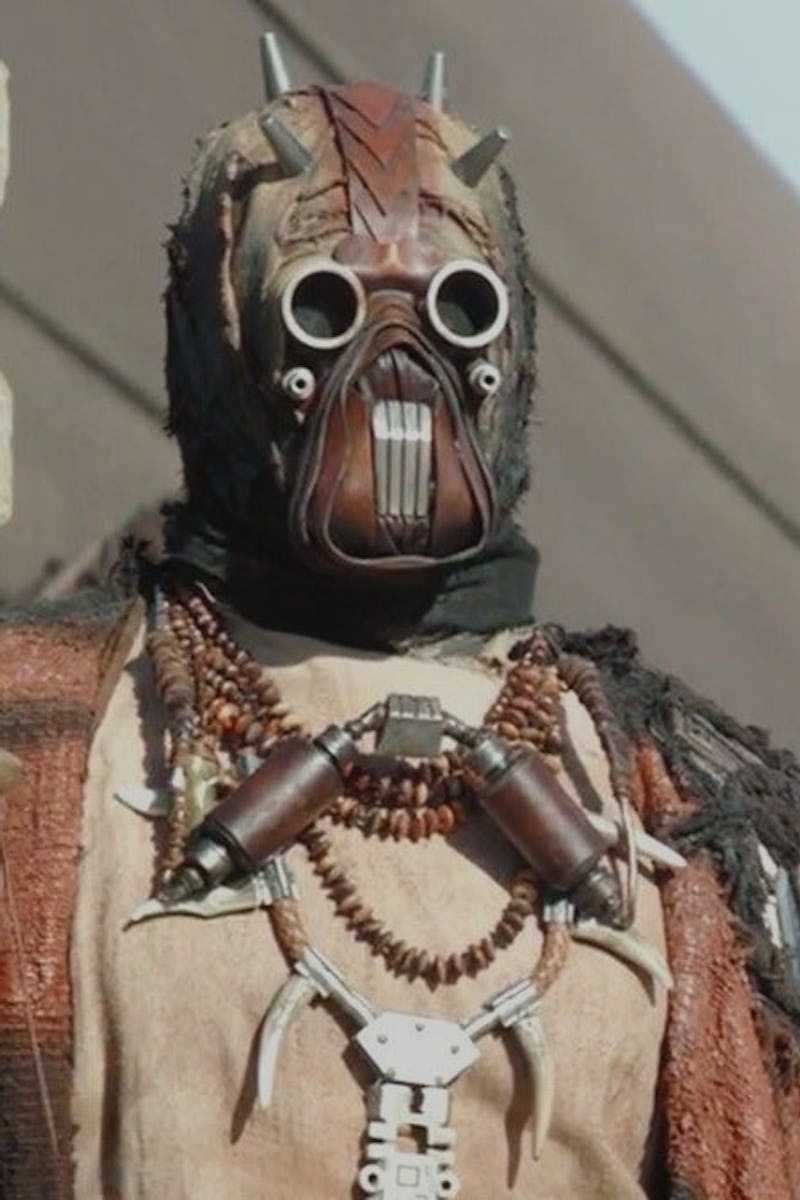
“These people lay ancestral claim to the Dune Sea”
'Boba Fett' is fixing 'The Mandalorian's biggest failure
'Mandalorian' Season 2 established a clear allegory for the Tuskens. 'The Book of Boba Fett' is finally making good on it.
by Dais JohnstonThe Star Wars movies have always been quintessential space operas. The planet-hopping, epic stakes, and massive reveals have defined the genre for decades to come. But Star Wars television is doing something different. The Mandalorian and now The Book of Boba Fett eschew the normal space opera tone for something much more familiar to television viewers — the space Western.
This shift was especially prevalent in the Season 2 premiere of The Mandalorian, which had all the elements of a classic Western story: a marshal, a tavern, a stranger wandering into town, and the coming together of two usual enemies: the villagers of Mos Pelgo and the local Tusken Raiders. This episode placed the Tuskens in the position of Native Americans in the classic Western formula but fell short in truly humanizing them. The Book of Boba Fett, however, is finally fixing this with more Western tropes — and a healthy dose of empathy.
The Tusken Raiders have a complicated history in Star Wars. They’ve often been depicted as ruthless, soulless warriors who serve as a threat to Tatooine society. The Mandalorian sought to repair their image by showing Mando communicating and collaborating with the local tribe in Mos Pelgo, and together with the villagers, they conquered the Krayt Dragon.
However, there is a problem with this portrayal. The Krayt Dragon casualties were much higher among the Tusken Raiders than the townspeople. While The Mandalorian put some effort into portraying the Tuskens as more than just the “savages” we’ve seen in the films, at the end of the day, their faceless numbers weren’t more than cannon fodder.
The Mandalorian showed an empathetic side of the Tusken Raiders but ultimately treated them as “others.”
Then came The Book of Boba Fett. As the first Star Wars series with an Indigenous star (Temuera Morrison is of Māori descent), the series was already off to a great start in regards to representation. Then, the trailer teased an appearance of Tuskens, basically confirming the fan theory Boba survived the years on Tatooine by living among the tribe.
In Episode 2, The Book of Boba Fett took The Mandalorian’s bungled Indigenous redemption of the Tuskens and reshaped it into a story worthy of this fascinating tribe. Boba stages a train robbery — a classic Western trope — but instead of a nefarious hijacking, the heist is merely reclaiming the land the Tuskens have inhabited for hundreds of years.
After the train is successfully crashed, the passengers are allowed access to the lands, meaning no blood has to be shed at all. The Tuskens now have access to an entire train car of water, and they offer thanks to Boba by initiating him into their society. The ritual begins with a “vision quest” of sorts, inspired by an aspect of Native American culture.
Boba’s train heist proves he thinks the lands of Tatooine belong to the Indigenous Tuskens.
The redemption of the Tusken Raiders is clearly long overdue, and The Book of Boba Fett is giving them the attention they deserve. They’re not “savages;” they’re people who have seen their land overrun with “off-worlders” colonizing their ancestral planet.
Now that Boba Fett is establishing his position of power in Tatooine society, could he possibly be planning a collaboration or even reparations with the Tusken people that saved his life and took him in? Behind those goggle-like masks lie complex beings with more purpose to Star Wars than just existing as non-descript villains. Decades later, The Book of Boba Fett is just starting to explore this underrepresented society. Hopefully, there’s more to come.
The Book of Boba Fett is now streaming on Disney+.